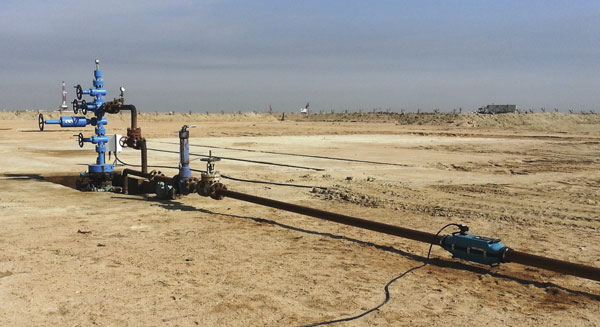Production surveillance can extend well life when combined with artificial lift techniques.
05/13/2015
About 125,000 electrical submersible pumps (ESPs) operate globally in artificial lift applications, producing 60 percent of the world's oil. These ESPs require significant investments of money and time to install and operate. The health, efficiency and life of these pumps are paramount to the bottom line.
Why Invest in Flow Monitoring?
Although ESP systems can improve recovery at tired wells, they can also suffer from failures at startup. Production surveillance at the wellhead prevents some failures by confirming the successful installation and commissioning of the ESP system. With production surveillance, operators can ensure the system is the right size for the well. A system that is too large for the reservoir results in pump-off, while a system that is too small will not achieve maximum production. In addition, production surveillance can confirm volumetric flow rates, production index (PI) and efficiency on the lift curve. Most oil wells are not equipped with flow metering. Trailer-mounted well test separators were traditionally used to gauge the production of ESP-powered wells. The separators often performed poorly during operation, resulting in a three- to five-day test duration per well. In most cases, high costs prevent operators from installing traditional multiphase flow meters on each well.Sonar Flow Meters
Sonar flow meters are an efficient monitoring technology for ESP systems in artificial lift. A sonar flow meter directly measures the flow velocity within the flow line. A multiphase flow engine calculates produced fluid properties and individual phase flow rates. The engine interprets the flow velocity in terms of gas and liquid flow rates, based on properties at the line pressure and temperature conditions where the flow meter is attached. Once the gas and liquid flow rates are determined at actual conditions, the oil, water and gas flow rates are converted to and reported at standard conditions. Production surveillance, such as sonar flow meters, can predict performance issues with electrical submersible pumps. (Image courtesy of Expro Meters)
Production surveillance, such as sonar flow meters, can predict performance issues with electrical submersible pumps. (Image courtesy of Expro Meters)
